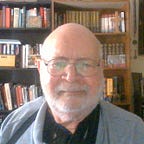Twenty-first Century Political Insanity
The left dominated government and their media shills have told so many lies, about the 2020 election, the Trump presidency, CoVid 19, and every other insane aspect of 21st century America, the truth very likely will never be known.
Jonathan Rauch wrote a piece, “How American Politics Went Insane,” in the Atlantic magazine issue of July/August 2016, which is relevant to what I am writing now. In it he captured the essence of America’s political scene from the campaign leading up to the Election of Donald Trump until sometime yet future. Writing in 2016, he more or less accurately foretold the election of 2020:
With lawmaking at a standstill, the president’s use of executive orders and regulatory discretion has reached a level that Congress views as dictatorial — not that Congress can do anything about it, except file lawsuits that the divided Supreme Court, its three vacancies unfilled, has been unable to resolve.
He goes on to diagnose the insanity as chaos syndrome. Now, chaos is what all politicians profess to abhor and against which their efforts will protect us:
Consider, then, the etiology of a political disease: the immune system that defended the body politic for two centuries; the gradual dismantling of that immune system; the emergence of pathogens capable of exploiting the new vulnerability; the symptoms of the disorder; and, finally, its prognosis and treatment.
He explains that the immune system consisted in the discipline that the two parties administer, holding in check the chaos that was likely to result if we had to rely solely on the system outlined in the constitution. He stated, “Parties, leaders, machines, and congressional hierarchies built densely woven incentive structures that bound politicians into coherent teams.”
Whereas I agreed with his characterization of modern political insanity, even his terminology, “chaos syndrome,” I forcefully disagree with his disparagement of the constitution as somehow deficient and unable to check chaos. At least some of our founders warned against political parties, and their warnings for the most part held until about 1830.
There were parties from early on, but they didn’t acquire much influence until later. The biggest issue in the early years was the competition among local, state and federal power. That was pretty much settled at the time of the “Civil” War, which occurred because the northeastern oligarchs were set on centralizing government in Washington, DC.
It is my opinion that struggle to centralize governmental power defines the split between left and right. The left represents the forces that seek to centralize power, the right, representing the forces that seek individual, local and state power, with federal government reserving only the power necessary to raise taxes and to guard against invasion and interstate aggression.
The left, worldwide, routinely characterizes anyone to the right of absolute centralization zealots as extreme right wing, neo-Nazi or worse, reflecting their own denial of the reality that they themselves are the extremists. It took nearly a century for the left to, faintly and qualifiedly, concede the horrors of life under communism. Indeed, they are still in denial about China and other current communist regimes. They also still idolize monarchy and oligarchy wherever they are found, in politics, business, education, and religion.
The insanity of central power worship is aided and abetted by mainstream media, the education establishment and organized religion. Mainstream media continually mis-represent and covers up the havoc that routinely results from left-wing policies.
The most obvious examples of corrosive leftwing policies are open borders, abortion rights, and the “wars” against poverty, drugs and social injustice. Because of exaggeration, exploitation and outright false reporting, any non-left activity is reported to be extreme right wing. And much left-wing activity is falsely labeled right-wing, such as white-supremacist, Nazi/neo-Nazi and militia groups, all of whom favor central control.
While Rauch knew well enough the dangers of party politics and central control, he seems to be saying that the inevitable chaos from their absence is worse: “Insurgents and renegades have a role, which is to jolt the system with new energy and ideas.”
He says later, “The disorder has other causes, too: developments such as ideological polarization, the rise of social media, and the radicalization of the Republican base,” as though there were no radicalization of the left. He then has the gall to say, “Reversing the spiral will require understanding it.” It was obvious to me that he has no understanding of the problems the left causes.
He points to the early 20th century, naming the candidacy of Teddy Roosevelt, as the beginning the replacement of party caucuses determination of candidates. This, he claimed, began the weakening of party dictation of presidential candidates, culminating in the selection by the general population bringing on the chaos syndrome.
Rauch’s article covers only a fraction of the insanity that has metastasized throughout the body politic. I will attempt to cover the rest in future articles.
